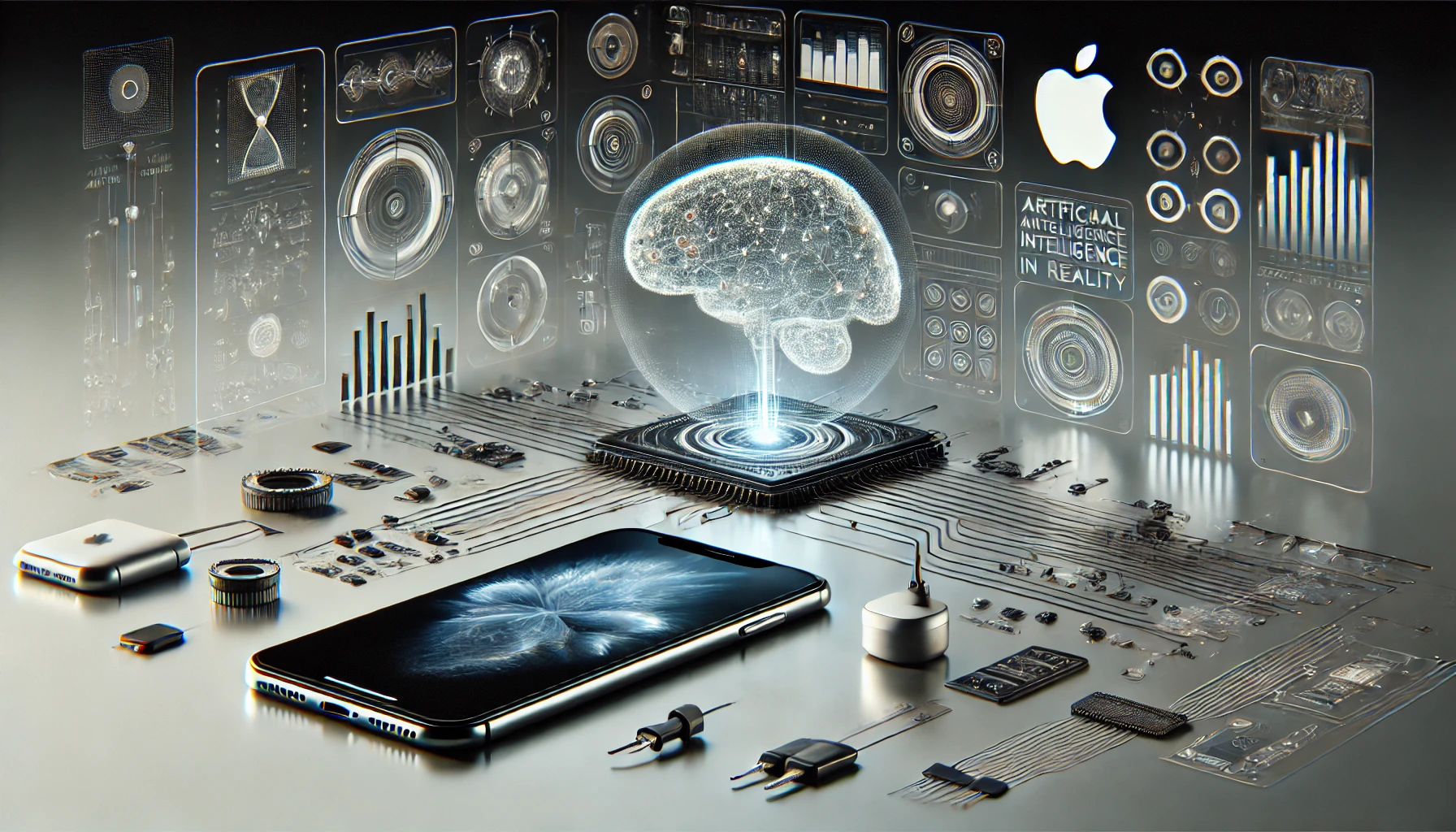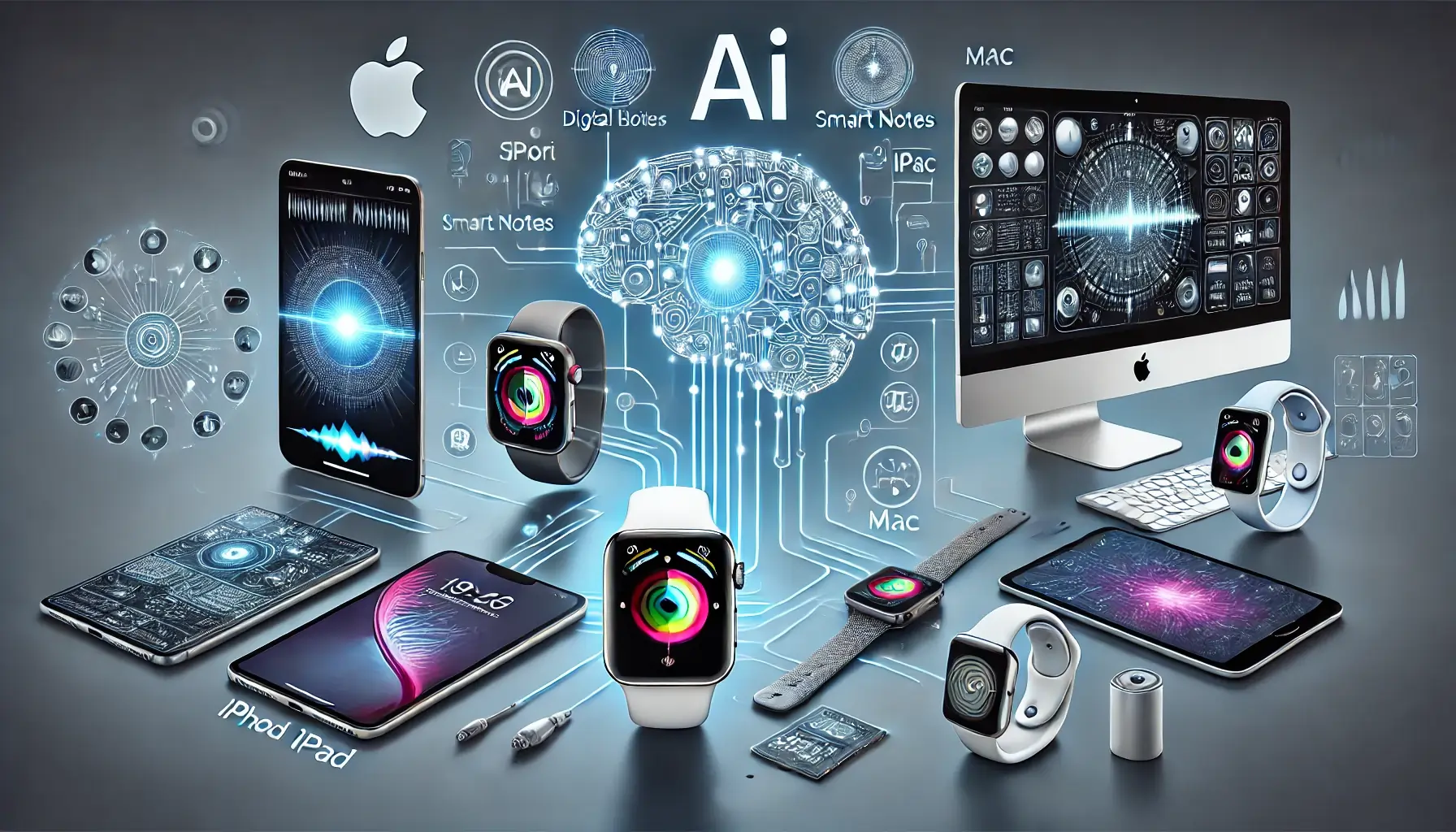Apple has always been at the forefront of technological innovation, and its approach to artificial intelligence (AI) is no exception. While some tech giants prioritize ambitious AI projects and futuristic concepts, Apple remains firmly rooted in reality, focusing on practical applications that enhance user experience. This blog delves into Apple’s AI strategy, exploring its key features, integration into the Apple ecosystem, commitment to privacy and security, and future prospects.

For more blogs like this please visit: sleeping sirens
The Foundation of Apple’s Artificial Intelligence Strategy
Apple’s AI strategy is built on the principle of practicality. Instead of chasing the most advanced Artificial Intelligence models, Apple prioritizes integrating Artificial Intelligence in ways that are immediately useful to users. This pragmatic approach is evident in the seamless enhancements AI brings to Apple’s existing products and services, making everyday tasks easier and more efficient.
Key Features of Apple Intelligence
- Natural Language Processing (NLP) Capabilities: Apple’s NLP capabilities are designed to understand and respond to user commands in a natural, intuitive way. This technology powers Siri, enabling it to comprehend context, tone, and intent, making interactions more human-like.
- Enhanced Machine Learning Algorithms: Apple leverages advanced machine learning algorithms to analyze vast amounts of data efficiently. These algorithms power features like personalized recommendations, predictive text, and smart photo organization, enhancing the user experience across devices.
- Personalized User Experiences: By integrating AI, Apple offers personalized experiences tailored to individual user preferences. From suggesting apps based on usage patterns to curating news articles, Apple Intelligence ensures that each user’s device feels uniquely theirs.
Apple’s AI Ecosystem
Apple’s AI capabilities are deeply integrated into its ecosystem, creating a cohesive and intuitive user experience.
- Siri and Its Evolution: Siri, Apple’s virtual assistant, has undergone significant Artificial Intelligence-driven enhancements. It can now perform more complex tasks, understand context better, and provide more accurate responses, making it an indispensable tool for many users.
- AI in iOS, macOS, and watchOS: Apple’s operating systems are enriched with AI features. From the predictive keyboard in iOS to intelligent search in macOS and health monitoring in watchOS, AI enhances functionality and usability across all devices.
- AI-Driven Features in Apple Apps: Many Apple apps, such as Photos, Music, and Maps, utilize AI to improve user experience. AI helps in organizing photos, curating playlists, and providing more accurate navigation, making these apps smarter and more useful.
Privacy and Security in Apple AI
Apple is renowned for its stringent privacy policies, and this commitment extends to its AI initiatives.
- User Privacy Commitment: Apple ensures that user data is protected and private. AI processes are often performed on-device rather than in the cloud, minimizing the risk of data breaches and unauthorized access.
- Secure On-Device Processing: By processing AI tasks on the device, Apple reduces reliance on external servers, enhancing security. This approach ensures that sensitive data never leaves the user’s device, safeguarding privacy.
- Transparency in Data Usage: Apple is transparent about how it uses data for AI. Users are informed about what data is being used and how it contributes to improving their experience, building trust and confidence.
Comparison with Competitors
Apple’s AI approach stands out in the tech industry for its emphasis on practical applications and user privacy.
- Differentiation from Google and Microsoft: Unlike Google and Microsoft, which focus on ambitious AI projects and cloud-based solutions, Apple emphasizes on-device AI processing and practical enhancements.
- Advantages of Hardware-Software Integration: Apple’s control over both hardware and software allows for seamless integration of AI features, providing a more cohesive and efficient user experience.
- Case Studies: Examining AI applications in other tech giants highlights Apple’s unique approach. For instance, while Google’s AI might excel in cloud computing, Apple’s on-device AI ensures better privacy and efficiency.
AI in Apple Devices
Apple devices are equipped with powerful AI functionalities that enhance user experience significantly.
- AI in iPhone: AI powers various features in iPhone, from the camera’s intelligent scene detection to the predictive text and Siri’s improved responses, making the iPhone smarter and more intuitive.
- AI-Driven Features in iPad: The iPad benefits from AI through features like handwriting recognition, smart note-taking, and personalized app suggestions, transforming it into a versatile productivity tool.
- AI in Mac Computers: On Mac, AI enhances everything from search capabilities to photo management and predictive tasks, making macOS a powerful and intuitive operating system.
AI for Developers
Apple provides robust tools and frameworks for developers to create AI-driven applications.
- Development Tools: Tools like Core ML, Create ML, and the Neural Engine empower developers to integrate advanced AI features into their apps easily.
- Success Stories: Numerous apps have successfully leveraged Apple’s AI technology, offering enhanced functionality and personalized experiences to users.
- Developer Support: Apple continuously supports its developer community with resources, documentation, and regular updates, fostering innovation and development.
Challenges and Criticisms
Despite its strengths, Apple’s AI strategy faces several challenges and criticisms.
- Perceptions of Apple’s AI Efforts: Some industry observers view Apple as lagging behind in the AI race due to its conservative approach and focus on privacy.
- Challenges in the AI Space: Apple must continuously innovate to keep up with rapidly advancing AI technology and competitors’ offerings.
- Criticisms on Transparency and Innovation Pace: Critics argue that Apple’s focus on privacy may hinder transparency and slow down innovation in AI.
Future Prospects of Apple AI
Looking ahead, Apple’s AI initiatives promise significant advancements and continued growth.
- Upcoming Features: Apple plans to introduce more AI-driven features, enhancing user experience and functionality across its devices.
- Market Impact: With its unique approach, Apple is poised to strengthen its market position and lead in AI-driven innovation.
- Long-Term Vision: Apple’s long-term vision for AI focuses on integrating it deeply into its ecosystem while maintaining privacy and security.
Apple’s AI strategy is a testament to its commitment to practical, user-centric innovation. By focusing on real-world applications, integrating AI seamlessly into its ecosystem, and upholding stringent privacy standards, Apple sets itself apart in the AI landscape. As Apple continues to enhance its AI capabilities, users can expect more intuitive, secure, and personalized experiences across all their devices. more…
For more blogs like this please visit: sleeping sirens
FAQs
- What is Apple’s approach to AI?
Apple’s approach to AI focuses on practical applications that enhance user experience, integrating AI seamlessly into its existing products and services. - How does Apple ensure privacy in its AI features?
Apple prioritizes on-device processing for AI tasks, minimizing data transmission to external servers and ensuring user data remains private and secure. - What are some AI-driven features in Apple devices?
AI-driven features in Apple devices include Siri’s advanced capabilities, intelligent photo organization, personalized recommendations, and predictive text. - How does Apple support developers in creating AI applications?
Apple provides robust tools like Core ML and Create ML, along with extensive documentation and resources, to help developers integrate AI into their apps. - What are the future prospects of Apple’s AI initiatives?
Apple plans to introduce more AI-driven features, strengthening its market position and continuing to offer innovative, user-centric solutions.

